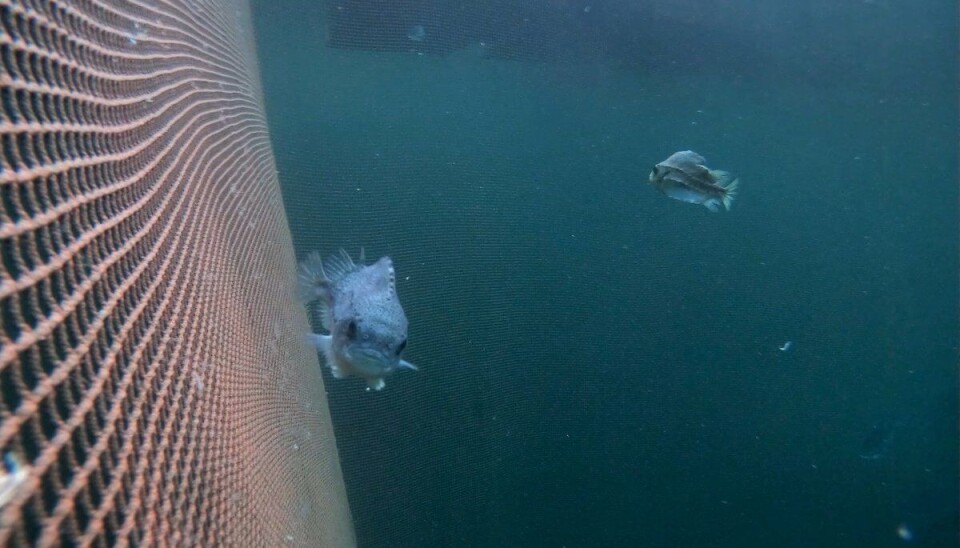
Mechanical delousing ‘is biggest threat to lumpfish’
Salmon farmers urged not to combine cleaner fish and other lice measures until more efficient recapture method is developed
The use of lumpfish to control sea lice in salmon farms should be discontinued during the spring and summer, when the need for mechanical delousing increases, a study in Norway has concluded.
Researchers sampled more than 2,000 lumpfish to find out how the welfare and survival of lumpfish evolve after transfer to sea cages, and to what extent welfare and survival are related to production and environmental conditions.
Although welfare was seen to be better than previously thought, it reduced the longer the lumpfish were in the pens, which researchers said was linked to an inability to recapture all the cleaner fish before mechanical delousing was carried out on salmon.
Increased injuries
“No clear relation was found between production conditions such as net maintenance and delousing and lumpfish welfare at the site level. The assessment of the various operational welfare indicators nevertheless showed an increase in the severity of skin, eye, and fin injuries after delousing. In addition, weekly mortality increased after the first mechanical delousing in all sites,” wrote the authors.
They added that while most sampled lumpfish exhibited good or slightly reduced welfare, “present findings clearly indicate that mechanical delousing critically affected lumpfish welfare and survival”.
“According to Norwegian aquaculture management regulations, it is required to remove cleaner fish before delousing. Unfortunately, current recapture and sorting methods are not good enough, as the salmon farm staff rarely manage to take out the entire population shortly before delousing, and recapture can itself lead to injuries and increased stress.
“The reduced welfare and survival that were observed after mechanical delousing indicated that there is an urgent need to develop recapture methods that allow removal of all lumpfish quickly and gently from a sea cage, without causing additional stress or injuries. As long as there are no better methods for recapture, the use of lumpfish in salmon sea cages should be discontinued when the sea lice pressure increases in spring-summer and the probability of a need for delousing increases.”

Declining welfare
The sampled lumpfish were among 660,100 that were stocked at four salmon farms between September 2019 to January 2021, with the average time a farm used lumpfish being 53 weeks.
Results showed that most lumpfish (60.7%) in the study had slightly reduced welfare, while 18.3% had good welfare, 18.8% had clearly reduced welfare and 2.2% seriously reduced welfare.
But welfare reduced the longer the lumpfish were in the pens.
“Among the lumpfish assessed in the first month after transfer to sea, 64.4% had good or slightly reduced welfare, while 34.2% had clearly reduced welfare and 1.4% had seriously reduced welfare,” wrote the authors.
“After 7-8 months at sea, 76.7% had good or slightly reduced welfare, while 20.5% had clearly reduced welfare and 2.8% had seriously reduced welfare. And, after 11-12 months at sea, 34.5% had good or slightly reduced welfare while 59.7% had clearly reduced welfare and 5.9% had seriously reduced welfare.”
Mortality rate
Average weekly mortality of lumpfish was below 0.5 % from stocking and up to six months in sea cages, but then exceeded 0.5% and peaked at 1.75% at 11-12 months after transfer to sea.
“Mechanical delousing affected the welfare and survival most negatively of all monitored external parameters,” the authors concluded. “Even though diseases are often pointed out as the main factor for mortality of lumpfish in sea cages, it was not the case in the present study. However, there were indications that diseases are more likely to occur when lumpfish are already weakened by other factors such as mechanical delousing.”
The authors, from Aqua Kompetanse AS, Gildeskål Forskningsstasjon AS (GIFAS), Val FoU AS, Akvaplan-niva AS, and University of Bergen, also pointed out that many of the lumpfish were underweight or emaciated at all times during the monitoring period, suggesting that the nutritional requirements of lumpfish are not fully met in commercial sea cages.






















































